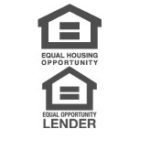Home Purchase Loans

Understanding Today’s Mortgage Market
It’s been about 8 years since the ’08-’09 recession and housing market crash. While the economy is slowly continuing to rebuild, it is no longer as easy to obtain a mortgage as it was during pre-recession years.
Over the past year, mortgage rates have been historically low, motivating many Americans to pursue their dream of home ownership, but the mortgage crisis of ’08 has certainly left its mark and caused mortgage underwriting to be more stringent.
This is not necessarily a bad thing since all applicants should be fully prepared and stable enough to take on a mortgage. However, knowing how to navigate the mortgage application process will make it less stressful for home buyers to secure their mortgage.
Getting Approved For a Mortgage
When applying for a mortgage, there are a few steps you want to take to get prepared and ensure your application is approved.
Step 1: Preparing Your Finances
Lenders want to see that you’re financially prepared to obtain a mortgage and pay it back over time. They’ll want to look at all sources of income, your job history, self-employment income, and your credit history.
If you’re self-employed, they’ll want to see copies of your last two tax returns to show consistent income. They require this to make sure you have an acceptable debt-to-income ratio. A debt-to-income ratio is basically all your monthly payments divided by your gross monthly income. This number helps lenders measure the ability you have to pay off your existing debt along with your mortgage. Generally, lenders like to see a debt-to-income ratio lower than 43%.
When it comes to your credit, lenders will like to see a solid credit history and often require a minimum credit score, depending on the type of mortgage. For example, you need at least a 620 credit score for some mortgages and at least a 580 credit score for an FHA mortgage.
If you are applying for a mortgage with a spouse who will be your co-borrower, their credit will also need to be run. Your score will also help determine what type of interest rate you get, making it essential to maintain a good credit score.
Step 2: Determining Your Mortgage Budget
The next step involves determining how much house you can afford. Your income and current debt amount will help lenders decide how much to pre-approve you for. No matter what amount you get approved to borrow, keep in mind that a good rule of thumb is to keep your total monthly housing expenses at or below 35% of your gross (pre-tax) income. For example, if you earn $70,000/year or 6,250 per month, your maximum housing costs should never exceed $2,187.50 per month.
Keep in mind that other costs may be tied into your house payment like property taxes, private mortgage insurance (PMI), and homeowner’s association fees. It’s best to go through your existing budget and determine how much you can comfortably spend on your mortgage each month.
Step 3: Figure Out How Much You Need For a Down Payment
Finally, you’ll want to determine how much your down payment will be. Your down payment requirements can vary, depending on what type of mortgage you get. Below are down payment minimums for three popular mortgage types:
USDA – as little as 0% of the home’s purchase price
Conventional – around 3-5% of the home’s purchase price
VA – as little as 0% of the home’s purchase price
FHA – 3.5% of the home’s purchase price



